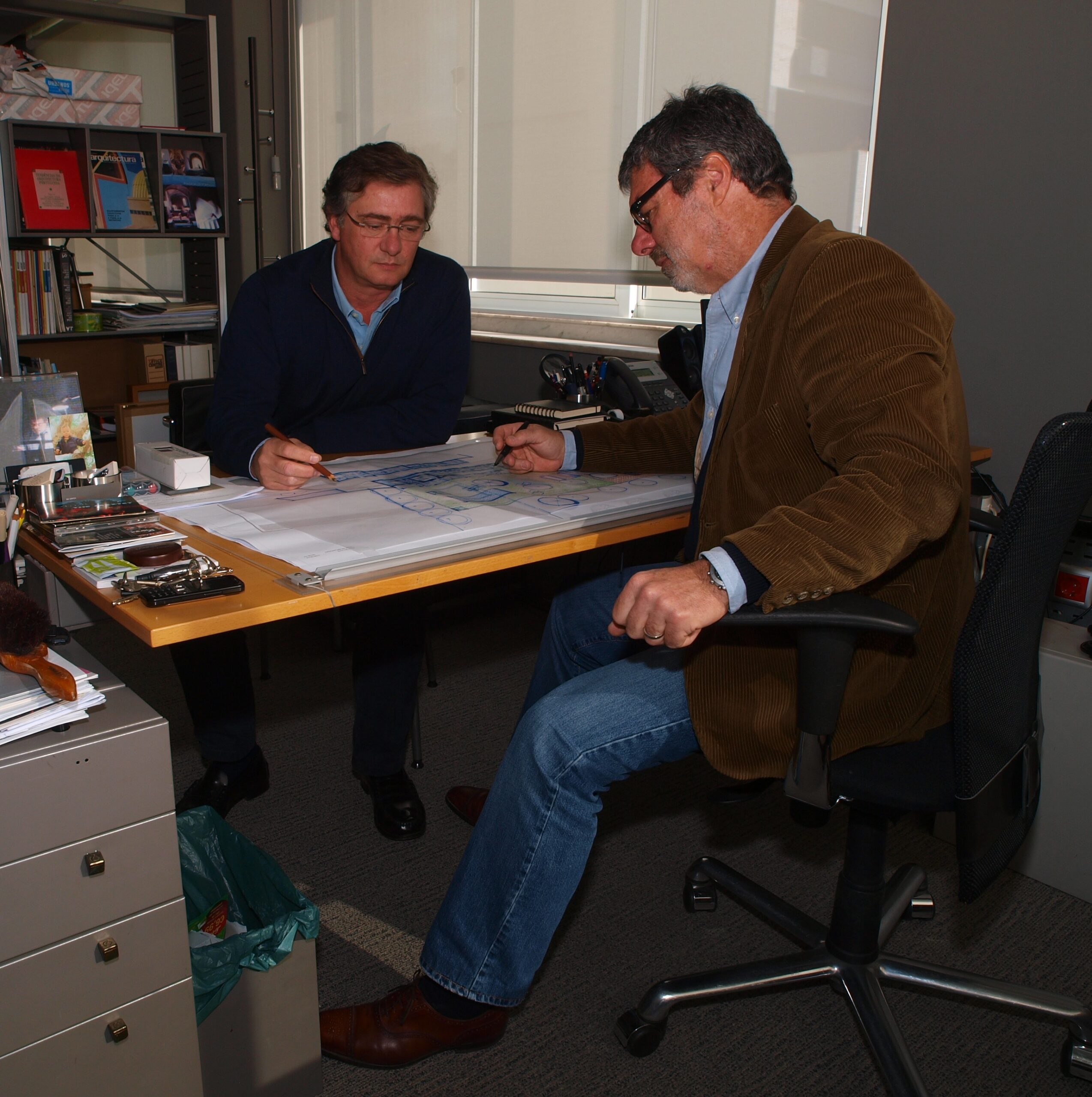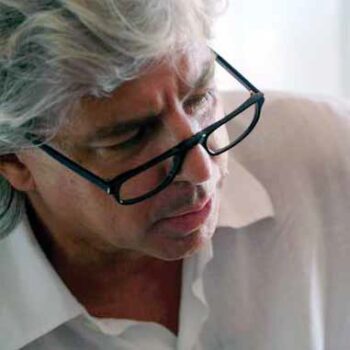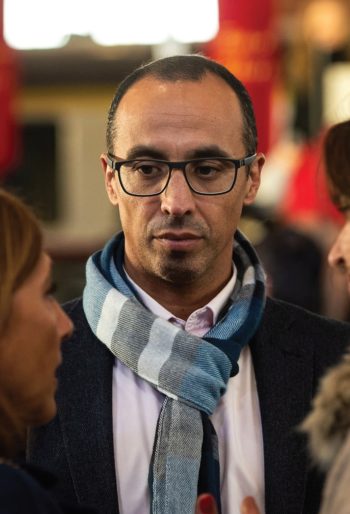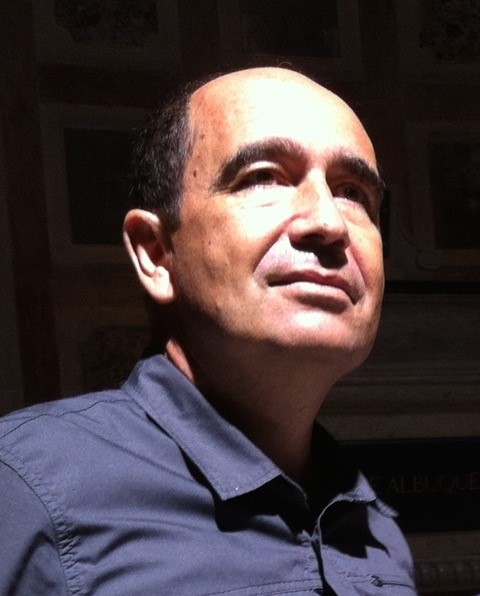A conversation with Arch. Tomás Rebelo de Andrade and Arch. Jorge Garcia Simões

A conversation with Arch. Tomás Rebelo de Andrade and Arch. Jorge Garcia Simões
'The word complicate is not part of our lexicon because we want what we do to be discernible and to be read’
What fascinates you most about your profession?
This question is easy to answer because the architecture is fascinating from the garden bench and the flower kiosk, to the school or the hotel. All of this is possible to do well in architecture. And what is fascinating in the profession is this, that any object can be made usable or livable. It is very rewarding because it is a profession where we see work done. And we have been fortunate in being able to translate many of our projects into work. Another fantastic thing is the recognition of people. Some time ago, I received an email from a friend thanking me for the pleasure of living in a house I’ve designed. This recognition of people who live in what was initially a drawing of ours is very rewarding and luckily we already had a few.
I read about your workshop that you reject the word “complicate”. How do you describe your work?
We work on the basis of simplifying procedures and simplifying the project and the work itself. Nowadays there is no room for complicated works. We already did some, at the beginning, but nowadays there is no space to do works that are difficult to execute, there is no money, neither market nor time for that. We have to simplify everything. We rely on standardization and normalization of solutions. Many times, a complicated program appears and we try to simplify, demystify, make it simpler. In fact, the word complicate is not part of our lexicon because we want what we do to be discernible and to be read. And then, we also have to put ourselves in our place, we often do not have the capacity to go as deeply, we are not equipped for this, nor does the situation allow us. We adapt to our customers and the challenges we have.
What kind of proposals captivate you the most?
We have recently been doing a project that moves people, which is closely linked to people’s experience, to the social aspect of architecture, and this is a very interesting challenge. We are talking about a parish center, a church, a social center. This aspect of architecture is very important and is a very big challenge. Housing is also something that moves people a lot, but the social issue even more. Nowadays, people forget the social benefits. We are going through a difficult period but we must continue to do things. In this context, social action is one of the greatest challenges. If you ask me what I would like to do, I would say a school, a high school, a college.
Do you like to follow processes or change a lot with each challenge?
We have very different things, which has to do with the phase in which they were made. The 90’s were experimental, we worked a lot for the automobile business and then things were standardized, but in everything outside of this business we experimented. Our biggest challenge must have been a condominium in Alta de Lisboa, with around 350 apartments, where we used some unusual construction systems in Portugal. What resulted better was the rationalization of the project, it was the construction systems that reduced the costs and ensured the speed and efficiency of the execution of the work. At this moment we have a much more defined line, we have a much more architecture of our own, we have more concrete processes, more schematic, and that allow us to face challenges with greater security. We created an image.
Is it more difficult or easier to be an architect today?
It is increasingly easy to be an architect but it is much more difficult to do architecture today. There is a lack of resources, namely financial; there is a lack of time, customers are more demanding, they give us very tight deadlines; decisions are made day by day, we are doing a project that suddenly stops and then starts with other premises. It’s very difficult. The contracts that we are obliged to are tough, globalization causes foreign companies, which are investing here, to apply very different criteria, which makes us suddenly move from a system that is ours to another one that forces us to restructure everything. Not to mention legislation that is increasingly restrictive and contradictory in many ways. For example, something that is almost a contradiction: there are huge acoustic demands and huge thermal demands. The thermal equipment makes noise and the acoustics do not allow the thermal to fulfill its objectives. So the thermal has to come with more equipment to soundproof, which is more expensive and everything conflicts.
Did you build a house for yourself?
Arch. Jorge: No. I designed it, but I’ve never got to build it. I have my house project, because paper costs almost nothing, but then I lack the money to do it. I have a kind of ruin in Alentejo, which I’m taking a long time to start to recover, I know perfectly well how I want to do it, but as I do not invest in the stock market, I have no means to do so.
Arch. Tomás: In my case, I have a plot for which I did some 30 projects. I didn’t build it because I am not able, it is very difficult to make a house for myself. We have a lot of paths to follow, why follow one and not the other? I decide to go one way, but then I get to the middle and I think that if I went the other way it would be better. So I save this project and go to the next one. I know many architects to whom the same thing happens. What’s more, each line you draw has an associated cost. I draw a line and think, “No, I don’t have any money for this” and I delete it. If I had a pre-existence I would know what to do, but I can’t do it from scratch. My critical sense is much greater when it is for myself and as each line has a price, I reach a limit and think: “I will have to shrink. But you can’t shrink. So I have to change something. But this is not what I want anymore”, and I end up keeping it in the drawer.
This interview is an integral part of Revista Artes & Letras # 28, February 2012
Partially automatic translation from portuguese: some expressions may differ from their actual meaning.
News & Interviews
A conversation with Arch. Paulo David
‘It can be more exciting to build a home for a friend in my village, than to build a tower on 5th Avenue in New York for unknown users’ Read more
A conversation with Eng. Rui Coutinho
‘The route of our conservation and maintenance decisions lies in the inspection and monitoring activity that aims to identify the most advantageous time to intervene in the engineering structures’ Read more
A conversation with Arch. Paulo Cunha
‘The offices (…) that managed to restructure, (…) may come stronger from this conjuncture. The rest struggle (…) on an increasingly narrower wall. ’ Read more




